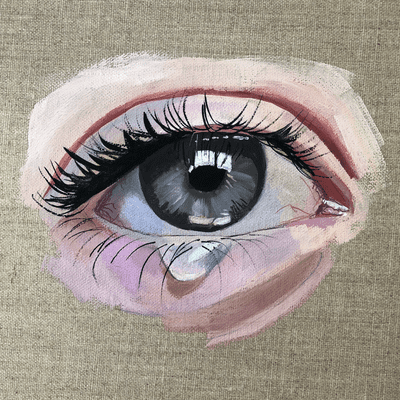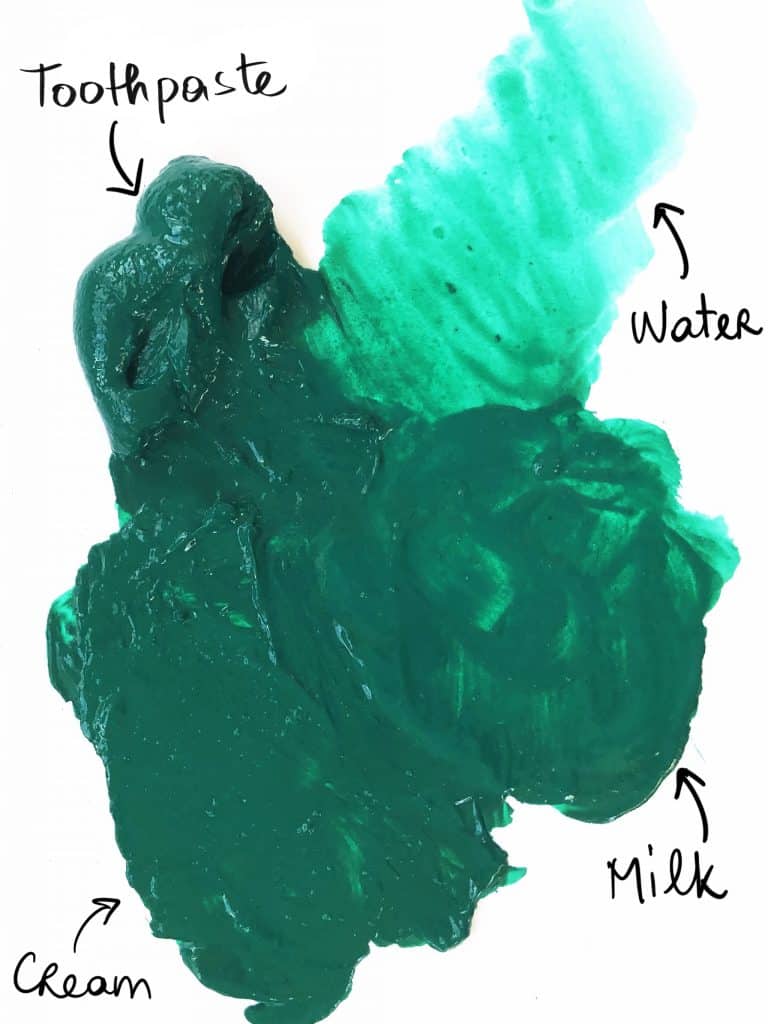10 tips for Gouache Beginners
If you’ve never used gouache before, there are a few ideas and strategies you may use to get started with gouache painting. We’ll look at ten suggestions for novice gouache painters in this post, covering everything from selecting the best supplies to adding texture and experimenting with various methods.
To begin gouache painting, you’ll need simple equipment and supplies.
These may consist of the following:
- Gouache paints in primary colors.
- various sized and shaped brushes
- a mixing palette, water
- Support or painting surface, such as bristol board or watercolor paper
- optional tools for making unique effects, like a toothbrush or spray bottle.
You may start exploring the world of gouache painting and producing stunning and expressive artwork with the help of these supplies and tools.
Table of Contents
- Tip 1: Start with a limited color palette
- Tip 2: Try out various surfaces and supports.
- Tip 3: Use a wet-on-wet method.
- Tip 4: Learn to layer gouache.
- Tip 5: Discover how to preserve dried gouache:
- Tip 6: Experiment with various brush techniques and mark-making styles.
- Tip 7: Use reference photos.
- Tip 8: Play with gouache consisitency.
- Tip 9: Enjoy yourself and take breaks:
- 10. Try new things and experiment:
- Conclusion:
Tip 1: Start with a limited color palette
Understanding how to mix and combine colors is one of the secrets to producing excellent gouache paintings. Instead of attempting to use every color in your paint kit, start with a small palette of colors to learn this technique.
You can concentrate on color mixing and learn how different colors interact with one another with a small color palette. Additionally, it can assist you in developing a coherent and pleasing color scheme for your artwork.
Some color combinations to try for a limited palette:
- The primary colors are pink, yellow, and blue, which can be combined to produce a wide variety of tints and tones.
- Combining yellow, red, and purple enables you to produce warm and cool variations of each color and various shades and tones.
- Blue, yellow, and orange: These colors work well together to produce vibrant, upbeat artwork and more muted and subdued colors.
- White, black, ocher red for the Zorn color palette. This is a traditional color scheme that painters for ages have employed. Black and white offer a sharp contrast, while ocher and red are complementary hues that blend well to produce a good color scheme.
You may build a solid basis for gouache painting and produce more unified and aesthetically pleasing work by starting with a small color palette and practicing color mixing.
Tip 2: Try out various surfaces and supports.
Gouache can be applied to various materials, such as canvas, watercolor paper, and bristol board. The optimum surface for your needs may be discovered by experimenting with several possibilities, as each has its attributes and effects.
For instance, gouache paintings frequently employ watercolor paper because of its flat surface and capacity for absorption. You can select the one that best matches your needs from different weights and textures.
Another well-liked surface for gouache paintings is bristol board. It is perfect for precise work and tasks requiring a lot of handling because it is thicker and stiffer than watercolor paper. Another alternative for gouache painting is canvas, albeit it could be challenging at first.
You can determine which supports and surfaces are appropriate for your needs and gouache painting style by experimenting with a variety of them.

Tip 3: Use a wet-on-wet method.
In gouache painting, the wet-on-wet method is frequently used because it enables the creation of gradients and effects with a smooth, blended appearance. To use this technique, you must apply wet paint to a damp surface, allowing the colors to mix and blend as they dry.
You will need wet support and a wet brush to begin a wet-on-wet gouache painting. You can dampen your support by spraying it with a spray bottle or applying moisture to the surface with a wet brush. The colors can be adjusted by adding wet gouache paint on the damp surface.
The ability to create soft, diffused edges and gradients, which can be challenging to accomplish with other techniques, is one advantage of the wet-on-wet method. Additionally, it is a fantastic technique to add depth and brilliance to your artwork, which is ideal for the sky.
Tip 4: Learn to layer gouache.
Gouache is a fantastic medium to use to paint with several layers. It dries rapidly, making it simple to layer because you can go back and apply more layers of color without having to wait for each one to dry thoroughly.
However, the gouache may lose its vibrancy and become lifeless if you add too much. If you rub your brush too vigorously, you risk lifting the pigments from the preceding coat.
Therefore, apply the paint with a single brushstroke if you want to layer gouache for a painting with numerous layers of color without losing vitality.
Tip 5: Discover how to preserve dried gouache:
Gouache paints can dry quickly, and having excess paint that you can’t use might be frustrating. However, there are ways to keep dried gouache and use it in your artwork.
One technique involves adding a little water to the dry paint and stirring it until it becomes smooth. The paint can then be transferred to an airtight palette with a secure lid and kept in the refrigerator until you’re ready to use it.
Tip 6: Experiment with various brush techniques and mark-making styles.
Gouache offers a wide variety of brushstrokes and mark-making techniques to produce various effects in your paintings, which is one of its best features. You can attempt several methods to find the one that suits your style the best, from loose and expressive to more realistic.
The following are some mark-making and brushstroke examples to try:
- Dry brush: Lightly swiping the bristles across the surface with a dry brush will produce a textured look.
- Wet brush: Use a wet brush to draw precise, smudge-free lines and combine colors.
- Use a series of intersecting lines to create depth and texture with cross-hatching.
- Use a succession of dots to add texture and shading with stippling.
- Scumbling: To create a diffused, hazy effect, lightly drag paint across the surface with a dry brush.
Tip 7: Use reference photos.
Gouache paintings can be accurate and well-composed by using reference photos. Locate an image that serves as inspiration for your painting and refer to it while you work to employ reference images. If you wish to make a more accurate copy, you can trace the picture onto your support or use a projector. And no, tracing is not cheating as long as it helps you in your art journey.
Tip 8: Play with gouache consisitency.
You can vary the amount of water in your gouache mix. You can use gouache in different consistencies:
- thick like toothpaste from the tube to add texture
- creamy with a tiny bit of water for an opaque coverage
- milky for intermediate layers
- watery, like watercolor for the background, first layer, and glazing.

It isn’t easy to give you the exact amount of water needed, depending on the brands and the colors. In the same brand, different colors have different thicknesses when you squeeze the paint, and some colors are more ‘thirsty’ than others.
Tip 9: Enjoy yourself and take breaks:
When making your gouache paintings, it’s vital to concentrate, but it’s also crucial to take breaks and enjoy yourself. Maintaining a positive and laid-back attitude will help you get the most out of your artistic experience, which may be a peaceful and fun pastime like painting.
Here are some tips for enjoying yourself while painting and taking breaks:
- Set aside time just for painting: this will allow you to engage entirely in and enjoy the process.
- Take a break from painting now and then to relax and clear your mind. This will also look at your painting with fresh eyes and see some things to improve.
- Remember that painting is a form of self-expression, so don’t be too hard on yourself if you make mistakes or attempt new things.
- Above all, keep in mind to enjoy yourself and the artistic process.
10. Try new things and experiment:
One of the best things about gouache painting is the variety of methods and techniques you may employ to get various effects in your pieces. By experimenting and attempting new things, you may hone your abilities and build your style while creating original and expressive paintings.
Consider testing and experimenting with the following:
- You can employ a variety of brush strokes and mark-making techniques to get various effects in your gouache paintings, as discussed in Tip 6.
- Use spray bottles and toothbrushes to add splatters and other interesting effects to your paintings.
- Layering: Play around with layering various colors and textures to give your artwork depth and interest.
- Mixing media: Try combining gouache with different media like pencils or markers to get new and original effects.
Conclusion:
In this post, we’ve looked at ten suggestions for novice gouache painters, covering everything from selecting the best supplies to experimenting with various techniques and adding texture.
These advice’s main points are as follows:
- Start with a limited color palette to get skilled at producing the colors and hues you need for your artwork.
- Try out several supports and surfaces to see which suits your needs and preferences the best.
- Create gradients and smooth, blended effects by using the wet-on-wet approach.
- Learn to layer gouache.
- To get the most out of your paints and prevent wastage, learn how to conserve and rework dried gouache.
- Try out several brush and mark-making techniques to create your own look.
- Use reference photos to make more realistic artwork.
- Play with gouache consistency
- To ensure a happy and fun experience when painting, take breaks and have fun.
- Push the limits of gouache painting by experimenting and trying new things to produce genuinely original and expressive works of art.
You may master gouache painting and produce stunning and vibrant works of art by heeding the advice in this article and continuing to practice and learn.







